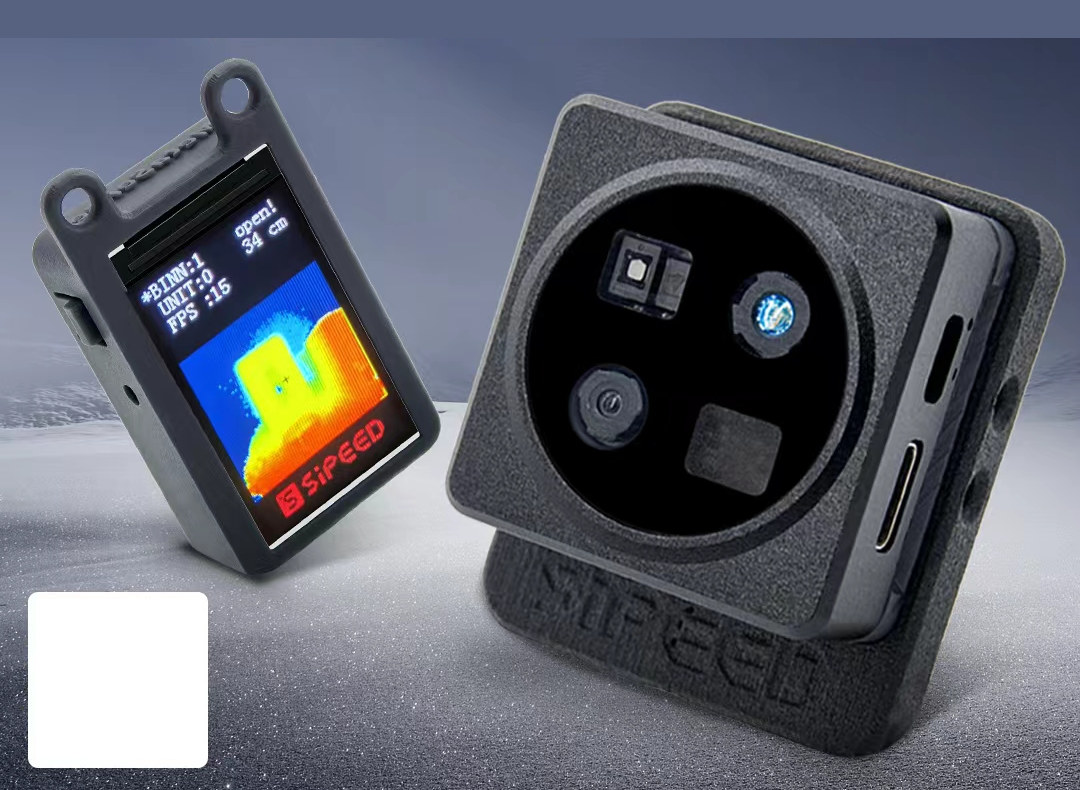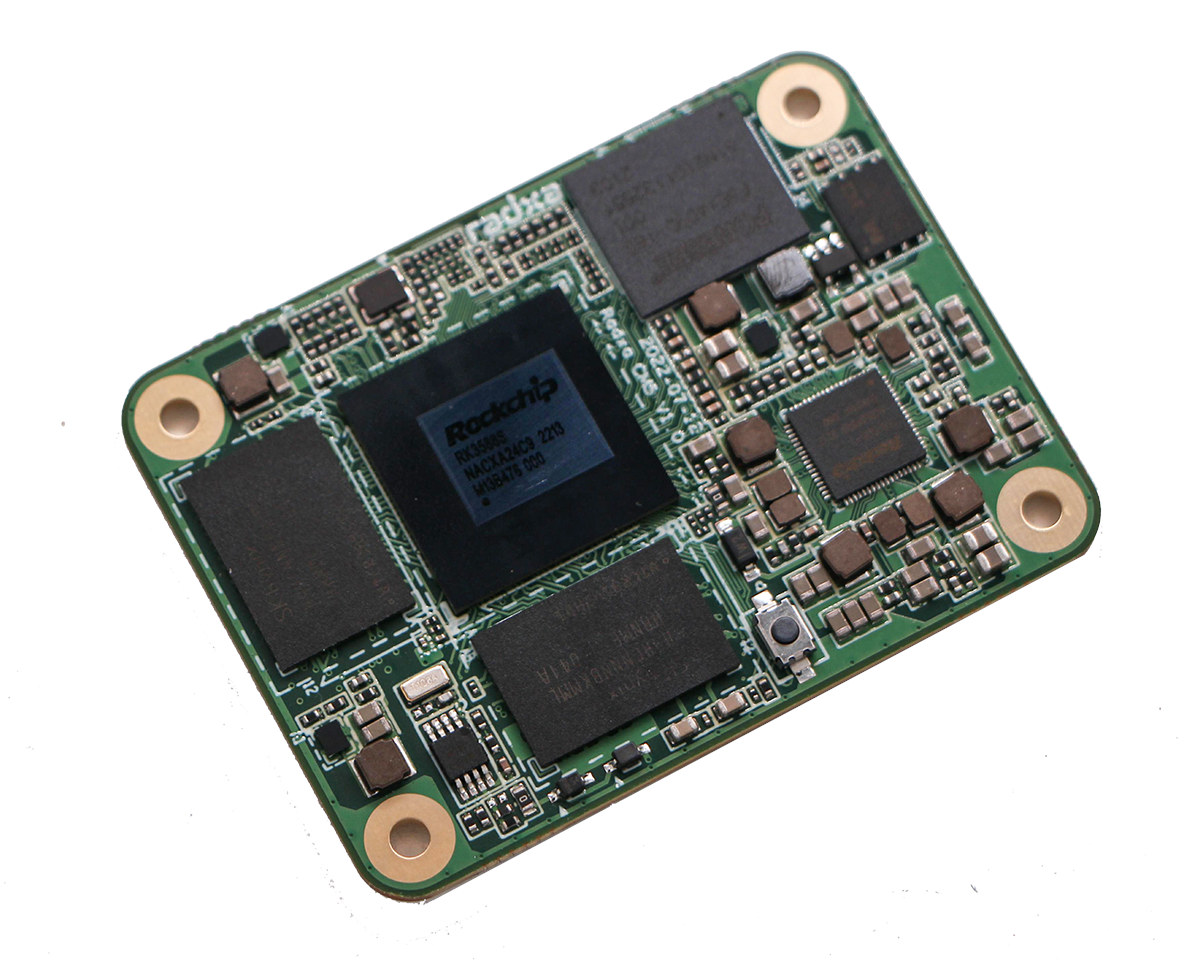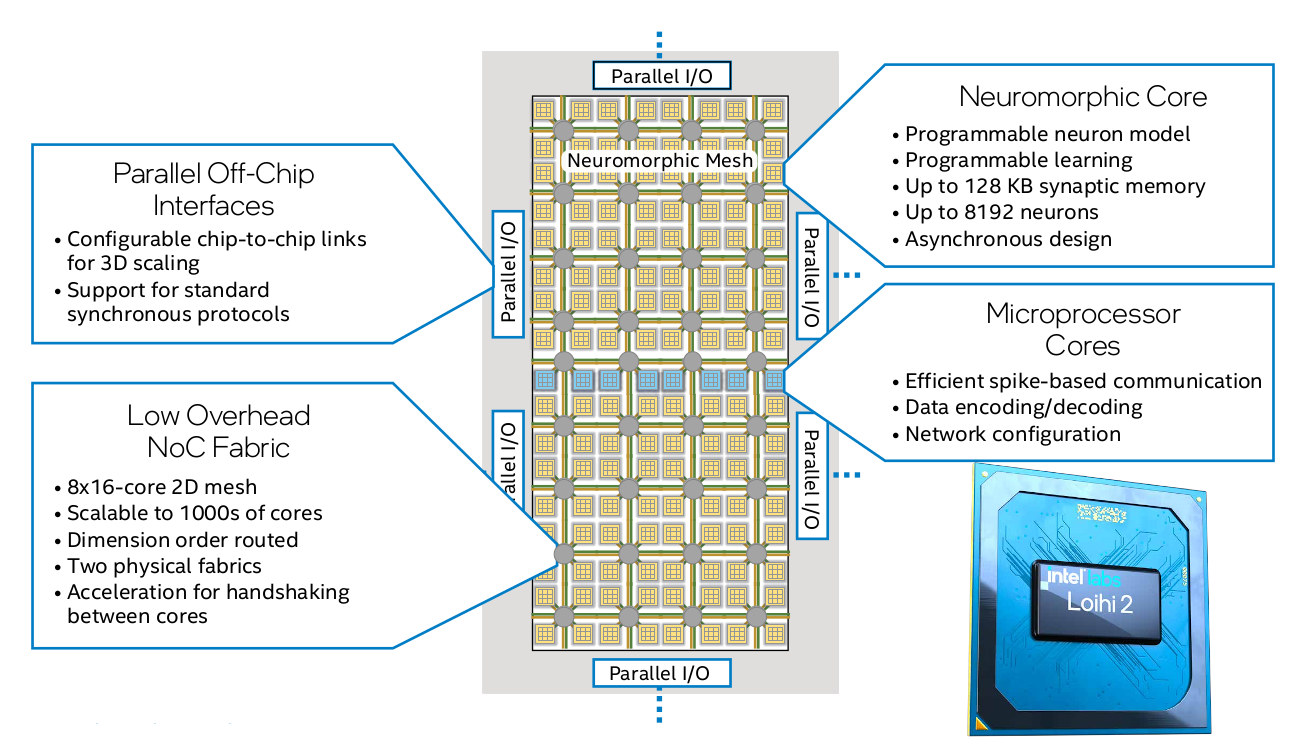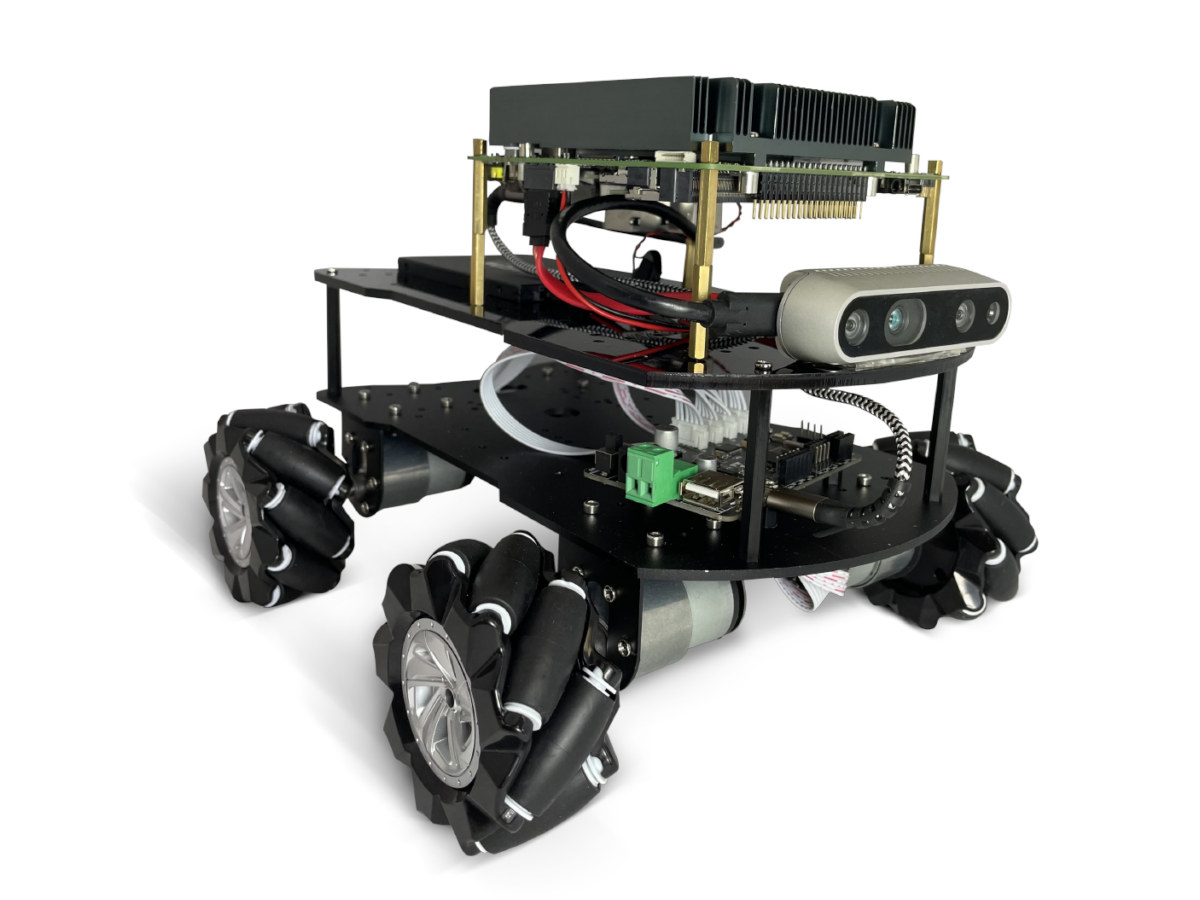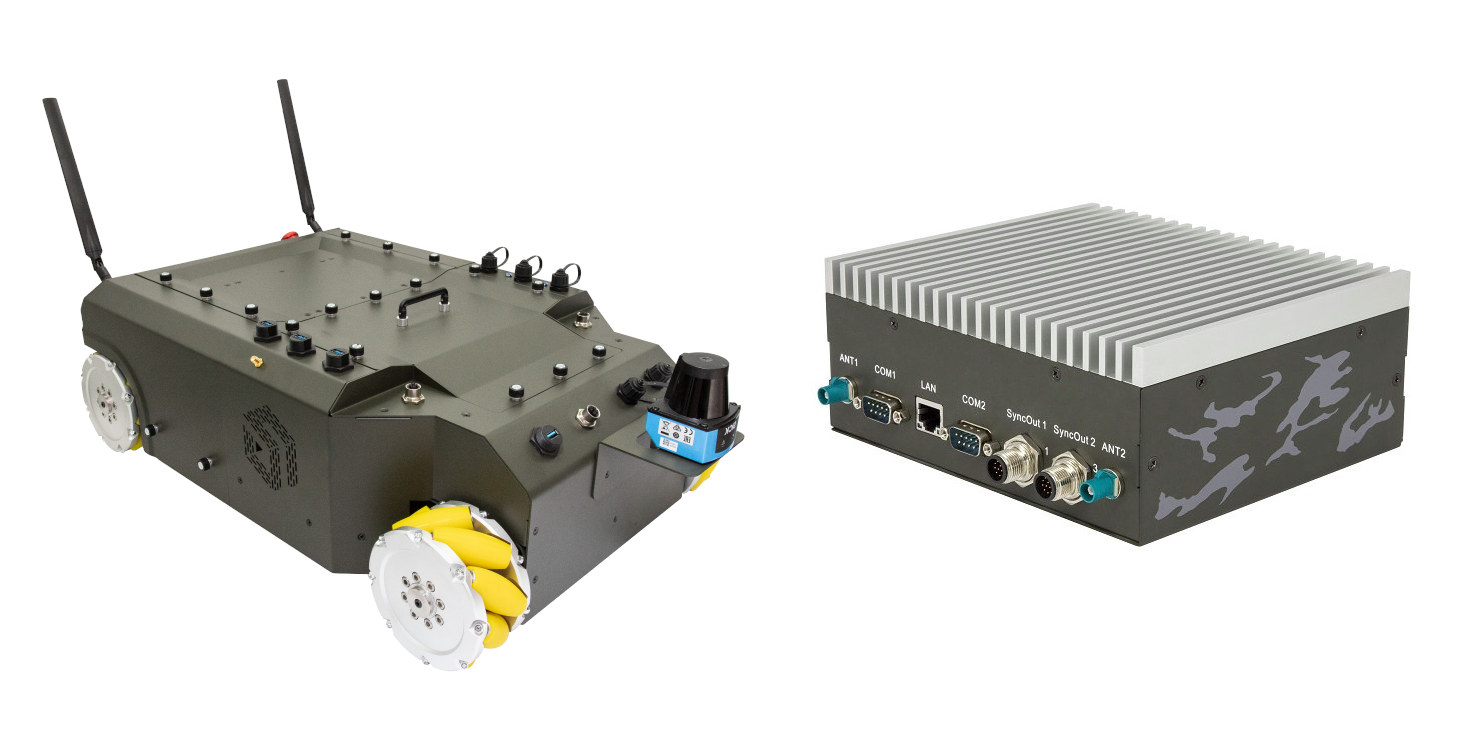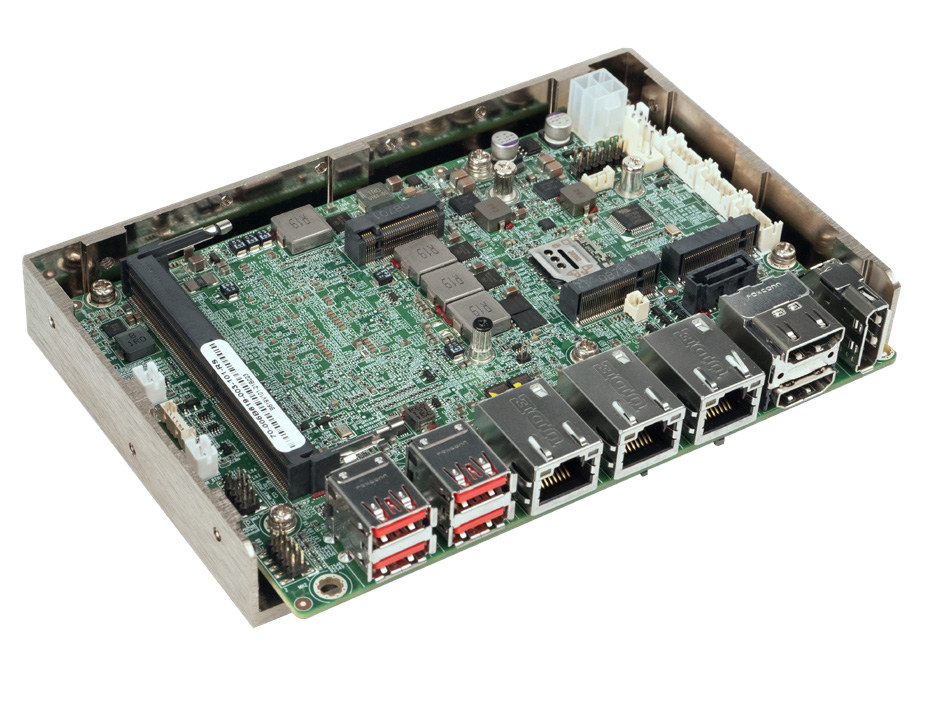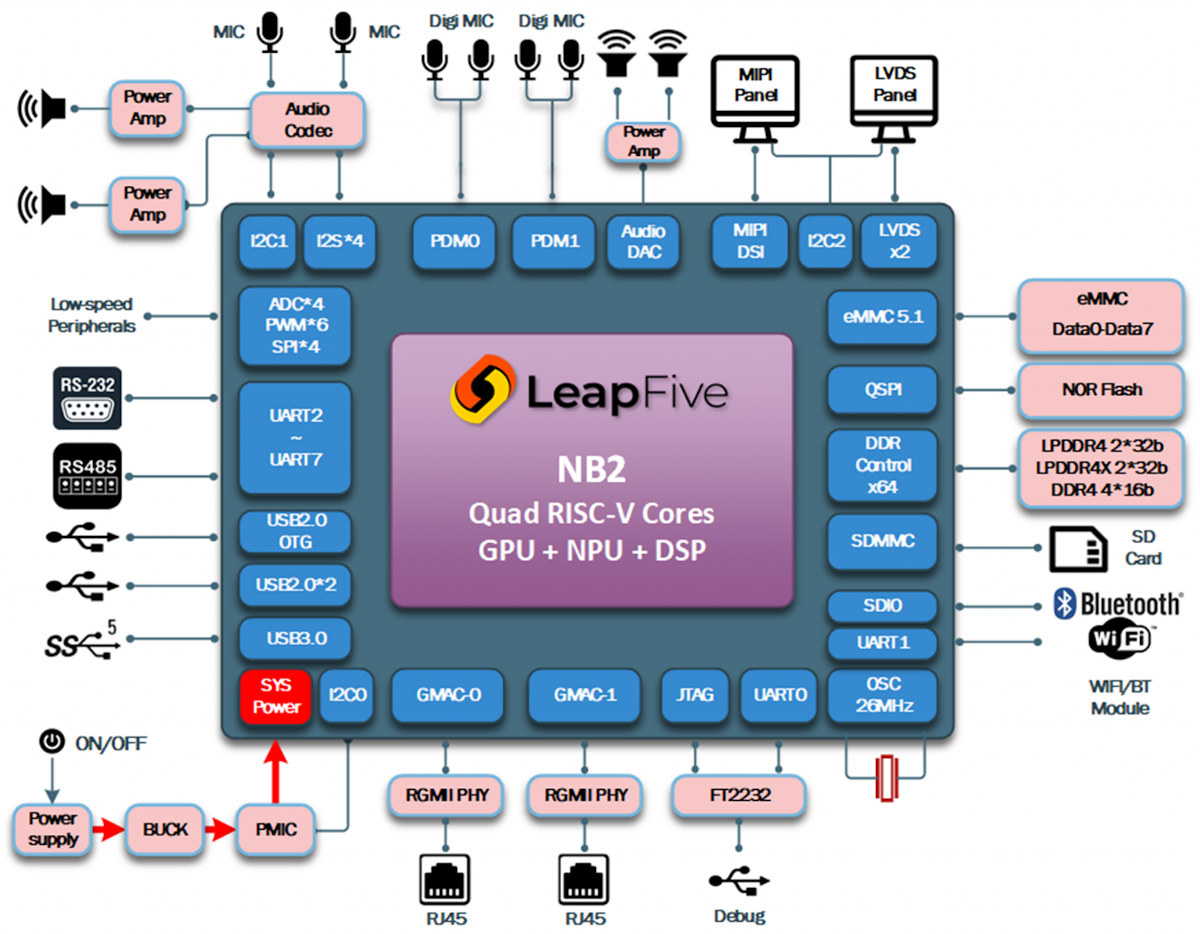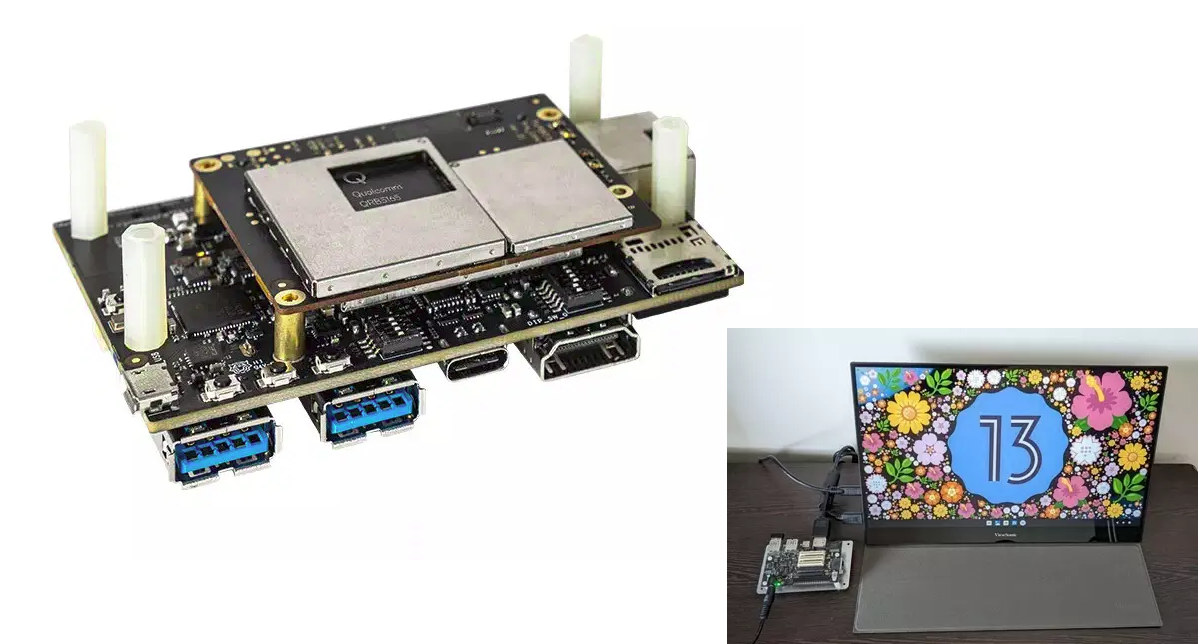We’ve just written about the Arducam ToF camera to add depth sensing to Raspberry Pi, but there are now more choices, as Sipeed has just introduced its MetaSense ToF (Time-of-Flight) camera family for microcontrollers and robots running ROS with two models offering different sets of features and capabilities. The MetaSense A075V USB camera offers 320×240 depth resolution plus an extra RGB sensor, an IMU unit, and a CPU with built-in NPU that makes it ideal for ROS 1/2 robots, while the lower-end MetaSense A010 ToF camera offers up to 100×100 resolution, integrates a 1.14-inch LCD display to visualize depth data in real-time and can be connected to a microcontroller host, or even a Raspberry Pi, through UART or USB. MetaSense A075V specifications: SoC – Unnamed quad-core Arm Cortex-A7 processor @ 1.5 GHz with 0.4 TOPS NPU System Memory – 128 MB RAM Storage – 128MB flash Cameras 800×600 @ 30 […]
Radxa CM5 – A Rockchip RK3588S module (somewhat) compatible with Raspberry Pi CM4
Radxa has been working on the ROCK 5 Compute Module (aka Radxa CM5) system-on-module compatible with Raspberry Pi CM4, but based on the more powerful Rockchip RK3588S octa-core Cortex-A76/A55 SoC. Just like the Raspberry Pi Compute Module 4, it comes in a 55 x 40mm form factor, but instead of just two high-density 100-pin board-to-board connectors, the module includes three to cater for the additional I/Os from the Rockchip processor, just like they did for the Radxa CM3 equipped with a Rockchip RK3566 processor. Radxa CM5 specifications: SoC – Rockchip RK3588S octa-core processor with 4x Cortex‑A76 cores @ up to 2.4GHz, 4x Cortex‑A55 core @ 1.8GHz Arm Mali-G610 MP4 “Odin” GPU Video decoder – 8Kp60 H.265, VP9, AVS2, 8Kp30 H.264 AVC/MVC, 4Kp60 AV1, 1080p60 MPEG-2/-1, VC-1, VP8 Video encoder – 8Kp30 H.265/H.264 video encoder 6 TOPS NPU System Memory – 4GB, 8GB, or 16GB LPDDR4x‑4224 SDRAM Storage – Optional 8GB, […]
Intel Loihi 2 high-efficiency neuromorphic chip works with the Lava open-source framework
Neuromorphic AI accelerator chips relying on spiking neural networks (SNN), which we’ve seen from companies such as Innatera or Brainchip, will be used more and more in the future as they provide much higher efficiency compared to traditional deep neural networks (DNN) solutions. Intel is also working on SNN, and recently announced the Loihi 2 second-generation neuromorphic research chip with up to 1 million neurons (the human brain has 86 billion of those on average) that delivers up to 175x lower energy to learn a new object instance with similar or better speed and accuracy compared to conventional methods running on a central processing unit (CPU). The new Loihi 2 neuromorphic chip offers the following improvement over the first generation Loihi: Up to 10x faster processing capability (2x for simple neuron state, 5x for synaptic operations, 10x for spike generation) Up to 60x more inter-chip bandwidth achieved through a combination […]
AAEON launches UP Xtreme i11 & UP Squared 6000 robotic development kits
AAEON’s UP Bridge the Gap community has partnered with Intel to release two robotic development kits based on either UP Xtreme i11 or UP Squared 6000 single board computers in order to simplify robotics evaluation and development. Both robotic development kits come with a four-wheeled robot prototype that can move omnidirectionally, sense and map its environment, avoid obstacles, and detect people and objects. Since those capabilities are already implemented, users can save time and money working on further customization for specific use cases. Key features and specifications: SBC UP Squared 6000 SBC – Recommended for power efficiency and extended battery power SoC – Intel Atom x6425RE Elkhart Lake processor clocked up to 1.90 GHz with Intel UHD Graphics System Memory – 8GB LPDDR4 Storage – 64GB eMMC flash, SATA port UP Xtreme i11 SBC – Recommended for higher performance SoC Intel Core i7-1185GRE clocked at up to 4.40 GHz and […]
SyncBot educational mobile robot supports NVIDIA Xavier NX or Intel Tiger Lake controller
Syncbotic Syncbot is a four-wheel autonomous mobile robot (AMR) platform for research and education that can be fitted with an NVIDIA Xavier NX or an Intel Apollo Lake/Tiger Lake-based controller running Ubuntu 20.04 operating system with ROS 2 framework, and comes with an motion control MCU board with an EtherCat master and running Zephyr OS. The robot comes with four 400W TECO servo motors, can handle up to 80kg payloads for sensors and a robotic arm, features 12V and 24V power output for sensors, four USB 3.0 ports, and can also be equipped with an eight-camera kit with Intel RealSense and ToF cameras. Syncbot AMR specifications: Robot Controller Platform (one or the other) SyncBotic A100 evaluation ki (Apollo Lake E3940) SyncBotic SBC-T800 series (Intel Tiger Lake UP3) SyncBotic SBC W series (Intel Tiger Lake UP3, waterproof version) SyncBotic NSync-200 series (NVIDIA NX) Dimensions – 200 x 190 mm STM32-based Motion […]
WAFER-TGL-U 3.5-inch Tiger Lake SBC offers 3x 2.5GbE ports, SATA, 4x display interfaces
IEI’s WAFER-TGL-U is a 3.5-inch SBC based on a choice of Intel Tiger Lake UP3 processors with up to 32GB RAM, SATA storage, three 2.5 Gbps Ethernet ports, four display interfaces including HDMI, DisplayPort, and the company’s custom iDPM 3040 slot for eDP/LVDS/VGA, as well as four USB 3.2 ports. The board also comes with M.2 sockets to add 4G LTE or 5G cellular connectivity, a few RS232/RS422/RS485 ports, and IEI says it is ideal for space-constrained applications such as AGV (Automated Guided Vehicle), AMR (Autonomous Mobile Robot), and small cabinets in factories. WAFER-TGL-U specifications: Tiger Lake UP3 SoC (One or the other) Intel Core i7-1185G7E quad-core processor up to 4.4GHz 12MB cache, TDP=28/15/12W Intel Core i5-1145G7E quad-core processor up to 4.1GHz, 8MB Cache, TDP=28/15/12W Intel Core i3-1115G4E dual-core processor up to 3.9GHz, dual-core, 6M Cache, TDP=28/15/12W Intel Celeron 6305E (up to 1.8GHz, dual-core, 4M Cache, TDP=15W) System Memory – […]
LeapFive NB2 quad-core RISC-V processor comes with GPU, NPU, and DSP
After SiFive and StarFive, here comes LeapFive RISC-V silicon vendor offering the NB2 quad-core 64-bit RISC-V application processor with GPU, NPU, and vision and audio DSPs capable of running Linux. LeapFive NB2 processor is equipped with MIPI DSI and LVDS display interface, dual GbE, USB 3.2/2.0 interfaces, and other peripheral interfaces that make it well-suited to a wide range of applications including Smart Home applications, robotics, industrial gateways, drones, building automation, smart cities, digital signage, medical equipment and more. LeapFive NB2 specifications: CPU – Quad-core SiFive U74 64-bit RISC-V processor @ 1.8 GHz delivering 2.5 DMIPS/MHz Cache – 32KB I-cache, 32KB D-cache, 2MB level 2 cache GPU – “High-performance graphics processor” @ 850 MHz DSP – Dedicated vision DSP, audio DSP NPU – Independent AI engine delivering up to 4 TOPS @ 1.4 GHz VPU – 4Kp60 H.264/H.265 Video encoding and decoding, JPEG image codec System Memory – Up to […]
Android 13 is already working on Qualcomm Robotics RB3 and RB5 platforms
Qualcomm Robotics RB3 (aka DragonBoard 845c) and Robotics RB5 boards can already support Android 13, just a few days after the source code was pushed to AOSP (Android Open Source Project). Once upon a time (i.e. a few years ago), it would have taken weeks, and more likely months, to port the latest version of Android (AOSP) to a specific single board computer. But thanks to initiatives such as Project Treble, Android reference boards such as DragonBoard 845c (RB3), HiKey 960, Khadas VIM3, and Qualcomm Robotics Board RB5 can now get the latest version of Android up and running in a matter of days. Android 13 was released on August 15, and Linaro wrote about RB3 and RB5 support on August 18, and while Linaro engineers collaborated with Google engineers before the AOSP, it is still an impressive feat. Amit Pundir, Linaro Engineer, explains how this was made possible: Over […]


